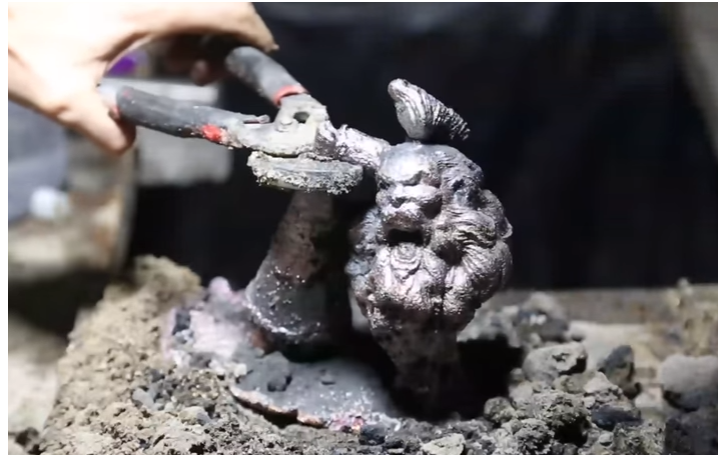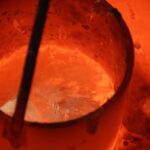

We have the privilege of viewing many action-packed videos from innovators showing what their new creations are all about, while in the moment. Seeing technique mixed with the drama and excitement of what these artists love to do is certainly refreshing, whether they are coming from snowy peaks, crashing ocean waves, or even fire, which Jeshua Lacock seems to be quite fond of using in his endeavors.
When we last caught up with the founder of 3DTOPO, based in Boise, he was still refining his Lost PLA Casting process and working on his giant glass 3D printer. More than your average DIYer or handy-around-the-house kind of guy, if something breaks on a machine, he just makes a new part—even if it’s metal. But when you watch the processes involved, you can see why not everybody is doing this in their workshop.
Being self-sustainable can be some complex business, but it’s obvious that this comes quite easily to someone like Lacock, and thankfully he shares his techniques with anyone else who is interested in such processes. Recently, Lacock took some time out to share his newest method with us—and it’s probably unlike anything you’ve ever seen. He’s named it the 3D Printed Lost Shell Sand Casting technique, and I can’t figure out if the process or the results are more exciting, but if you’re interested in casting in metal, this is definitely worth having a look at.
“As far as I know, the technique is new to the world,” Lacock recently told 3DPrint.com.
Stating he received numerous comments that his Lost PLA Casting technique looked ‘like too much work,’ Lacock decided to try something different with his new technique, casting in copper. (Note: There is brief shop talk/profanity in the video.)
“This method is much faster, easier and less expensive,” he told us.

While this method is certainly not meant for the novice, Lacock points out that sand casting with 3D prints certainly isn’t anything new. It is limited, however, in terms of his general project requirements.
“With that technique, only parts that can be removed from the sand are feasible – undercuts, cores, etc. are all limitations of that process,” said Lacock. “By burying and burning the print out directly in the green sand, those short-comings of sand casting are eliminated and brings most of the benefits of the Lost PLA technique–though the casts are not quite as detailed as that technique.”
The Lost Shell Sand Casting technique works with ferrous metal too, eliminating the need for ceramic shell, and of course the beauty of sand is that it can be used repeatedly when you are working in this medium. And in this technique, again, Lacock did use a 3D model that was printed using PLA filament with 0% infill.
All of the images here showing examples of this new technique are direct from the sand, with no clean-up, with the parts weighing anywhere from 10-15 pounds. When the sand is packed tighter, you’ll notice that you see the 3D printed striations more clearly, which Lacock finds helpful to see since their goal here is to accomplish as much detail as possible and he can use them as ‘a ruler for detail achieved.’
Lacock uses a 15kw induction generator during this technique, and finds that to be most efficient, melting 8kg of copper in about 20 minutes (costing you about $0.20 in electricity), and also capable of melting steel. They used a high-purity 8kg graphite crucible here, but for ferrous work, employ a clay-graphite crucible.
In their next documentary, Lacock and his team plan to work with steel, and will also be showing the induction generator in a future video if you are curious to find out more about that. Discuss this new technique further in the Lost Shell Sand Casting for 3D Printed Models forum over at 3DPB.com.
If you're looking to get architectural 3D animation in the USA, our service provides an exceptional way to bring your architectural concepts to life through dynamic, immersive visuals. Through our platform, you can easily request high-quality 3D animations that showcase your designs in motion, offering a detailed view of your project from multiple angles and perspectives. Whether it's for a real estate development, a commercial building, or an urban planning project, our expert team ensures that every detail is captured in a visually compelling animation.
Through our website, you can seamlessly get architectural 3D animation tailored to your project’s specific needs. With our help, you can offer potential clients or investors an engaging experience that goes beyond static images. By integrating CGI animations with real-world settings, lighting, and textures, our team creates a lifelike experience that allows your audience to interact with your project as though it were already built. This service is perfect for presenting complex designs in a clear, visually attractive way that stands out in the competitive architectural market.




